How to build a FREE AI Chatbot in less than 10 minutes
There’s so much speculation on social media about what AI chatbots and AI agents can do.
A lot of it is noise. With “gurus” claiming you can do everything in 5 minutes with AI.
We wrote this guide to show a REAL example of how you can build an AI chatbot for your website for free in under 10 minutes.
We’ll cover two methods (and mention ones that take longer than 10 minutes but are worth knowing):
🧠 Leveraging an AI chatbot solution
🤖 Picking templates from a general-use AI platform
Our objective: Build and deploy an intelligent AI chatbot that can answer website visitors’ questions like a real human, in under 10 minutes.
Let’s get to it 👇
Method #1: Leverage an AI Chatbot solution
Tools you can use: Big Sur AI, Chatbase, ChatBot, Tidio, and more.
For this example, we’ll use Big Sur AI (that’s us 👋)
Step 1: Sign up on Big Sur AI's Hub (link here).

Step 2: Add your website’s URL
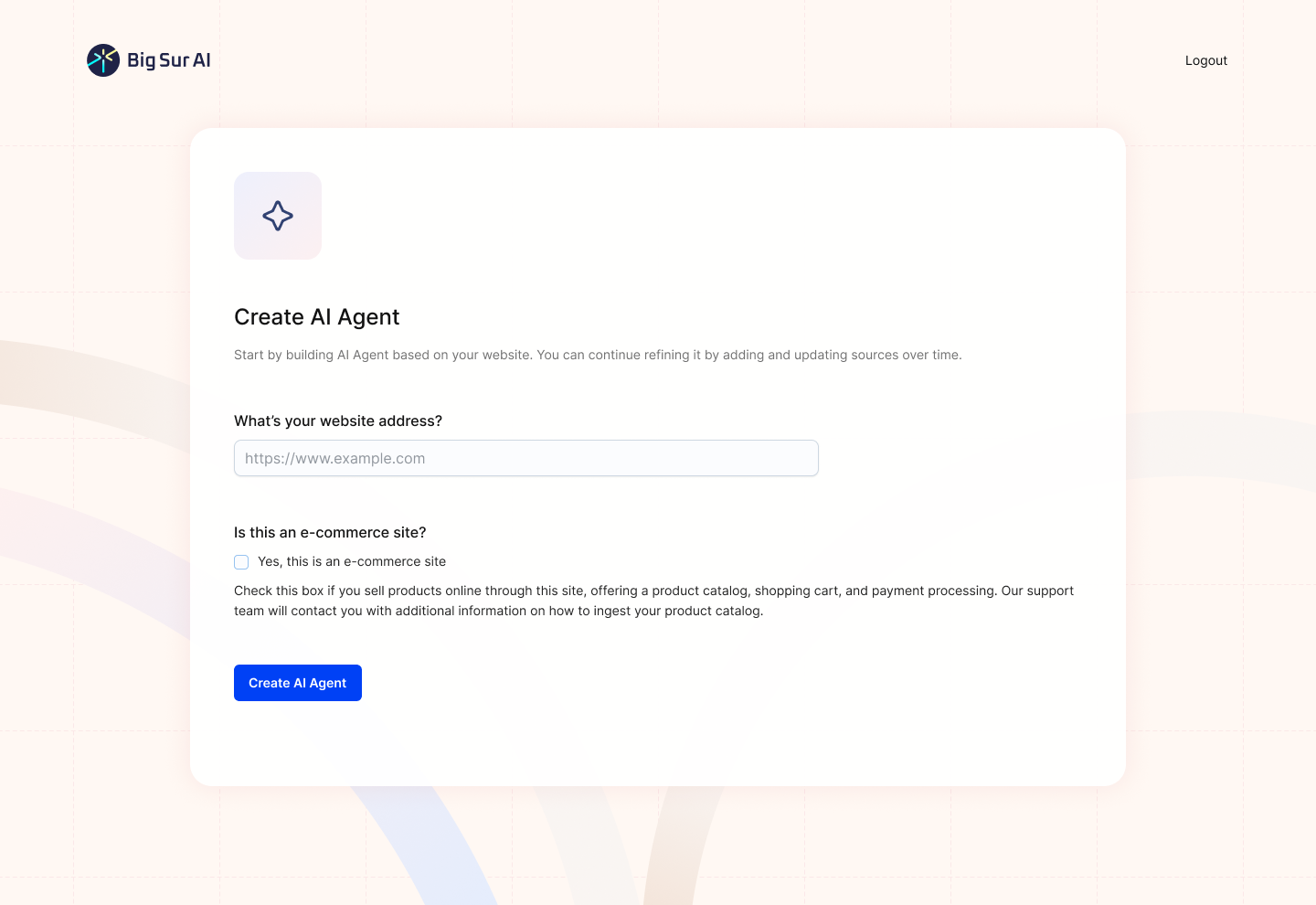
Once you add your URL, Big Sur AI will automatically start crawling all of your site’s pages.
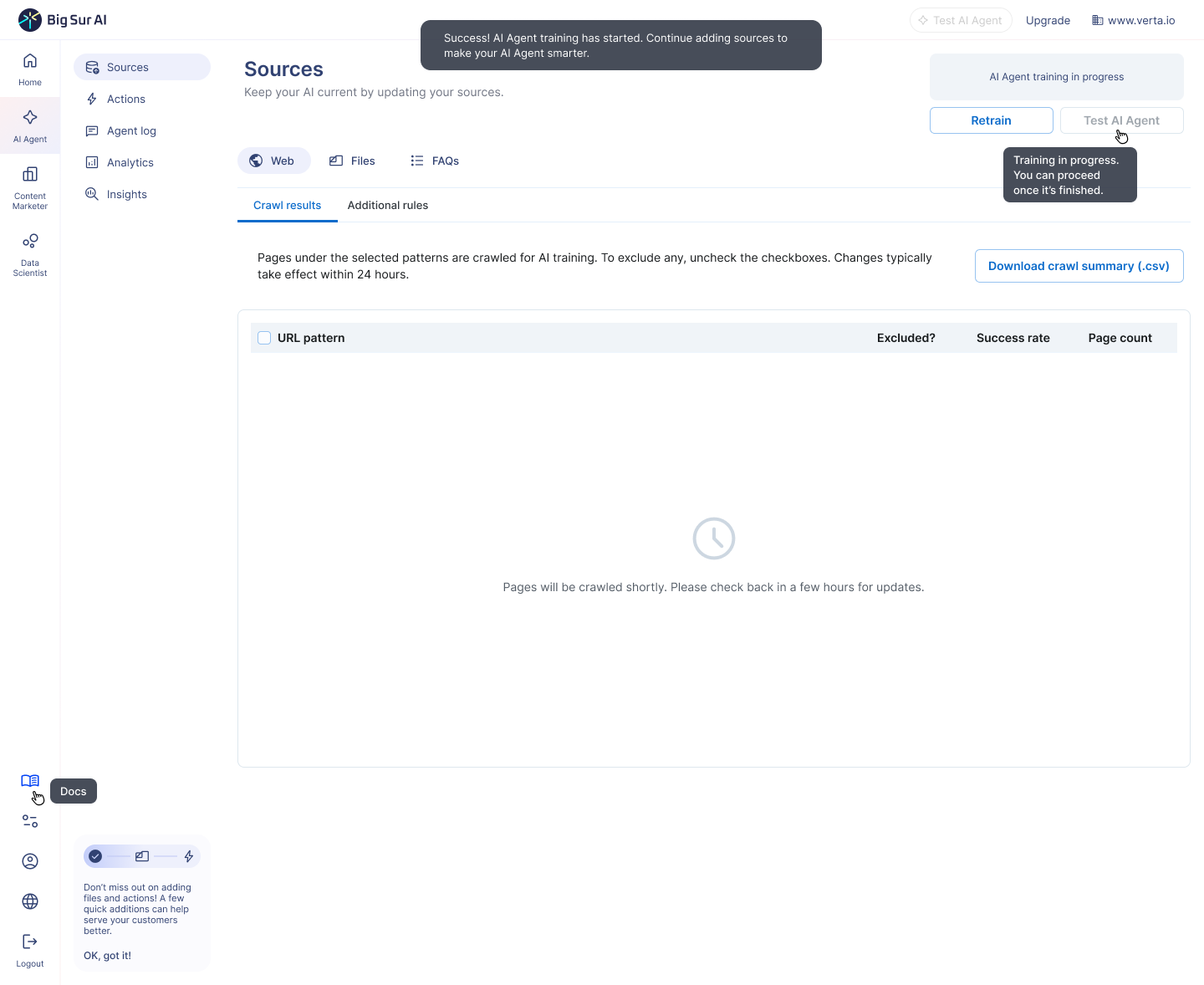
Step 3: Select which pages you want to use in the AI’s training
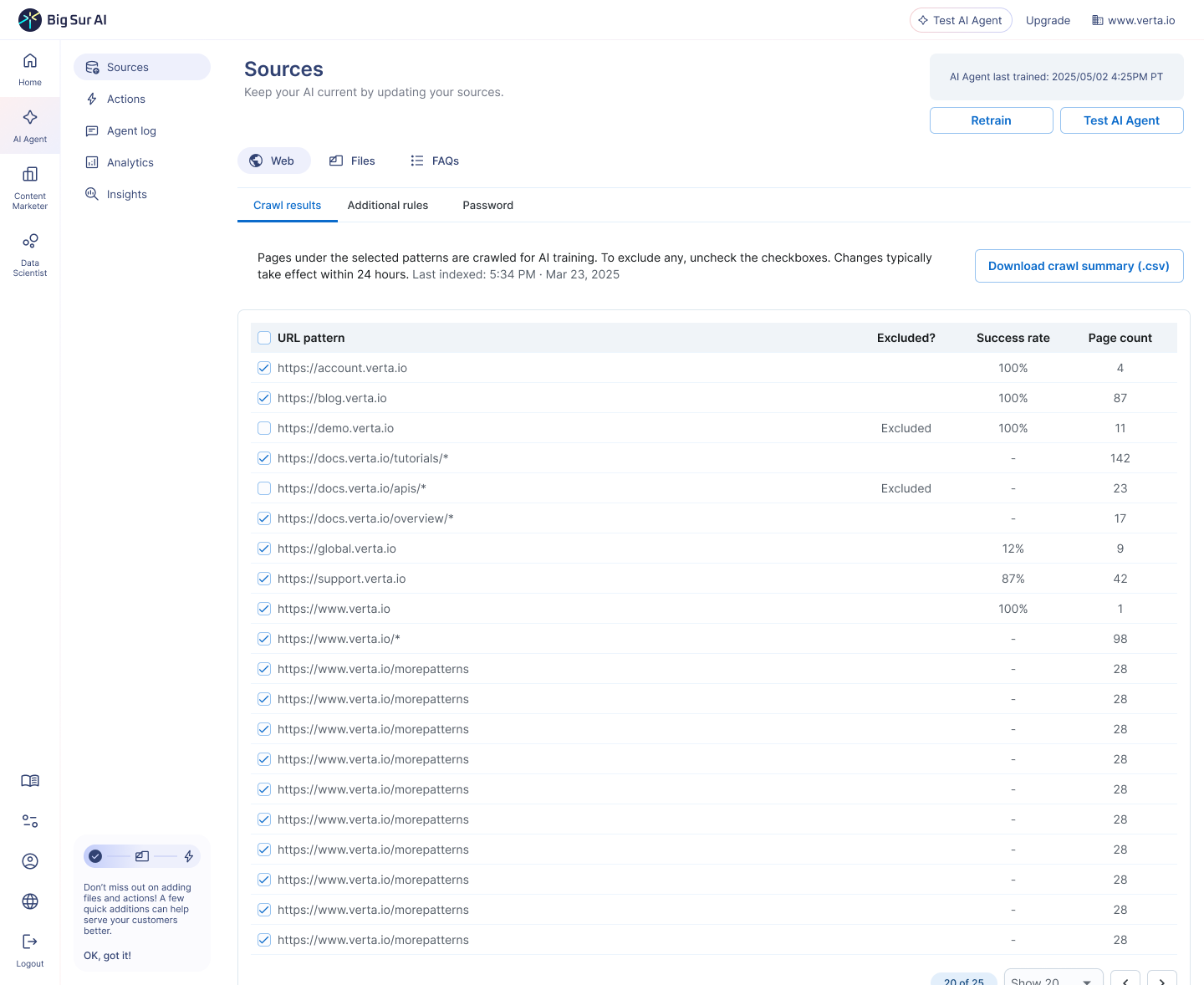
Step 4 (Optional): Add rules about what and what not to include in your AI chatbot

Step 5: Customize your AI chatbot
You can customize:
- Messages and placeholders (placeholder message, default prompts, greeting message, etc.)
- Styling (color, logo, background, banners, etc.)
- Chatbot integration (where it’s placed on your site, mobile vs desktop layout, etc.)
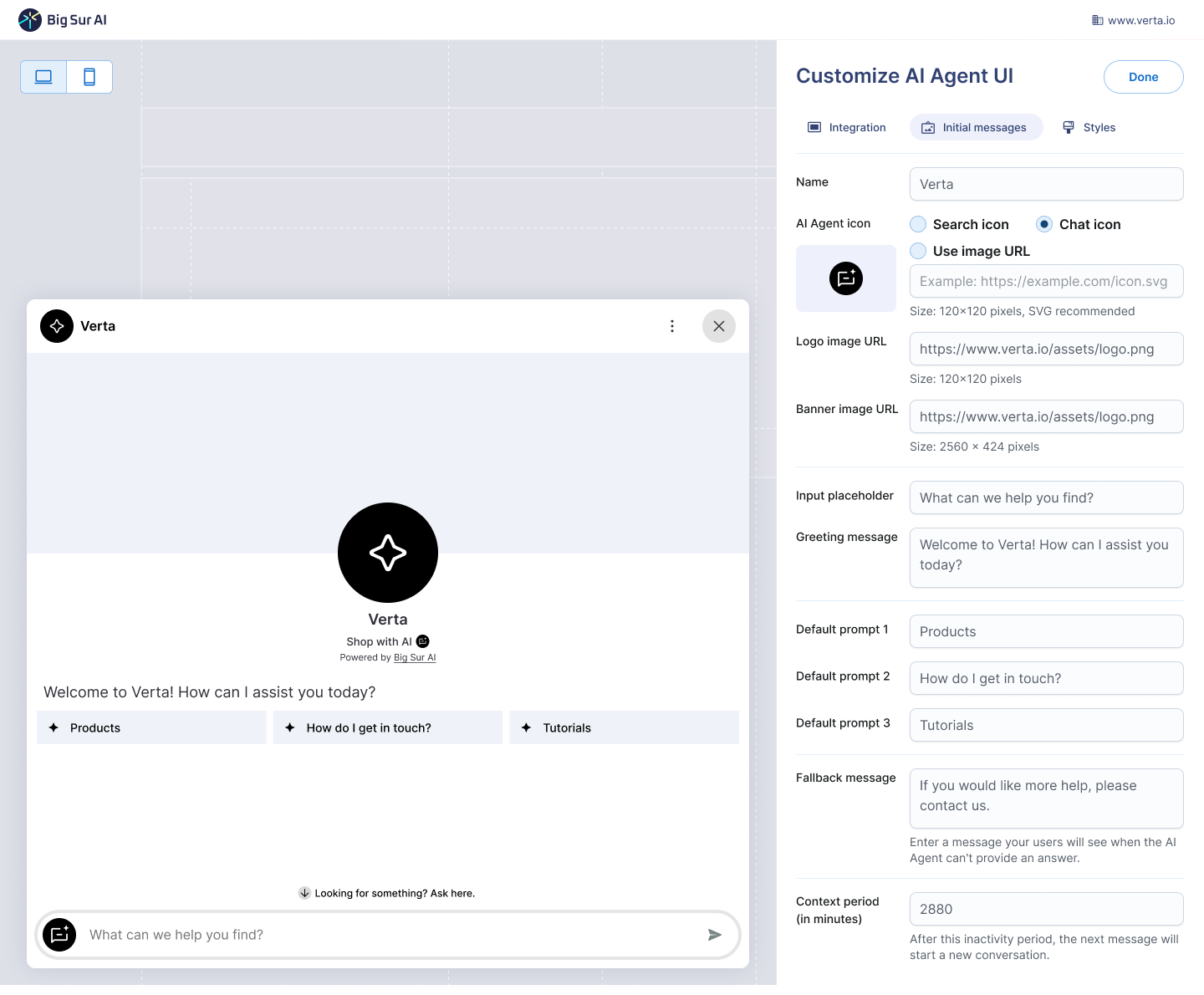
Step 6: (Optional) Enable Actions
Actions are workflows that AI can fire on its own, like asking a visitor for their information, or automatically firing emails or internal notifications.

Result (after under 5 minutes)
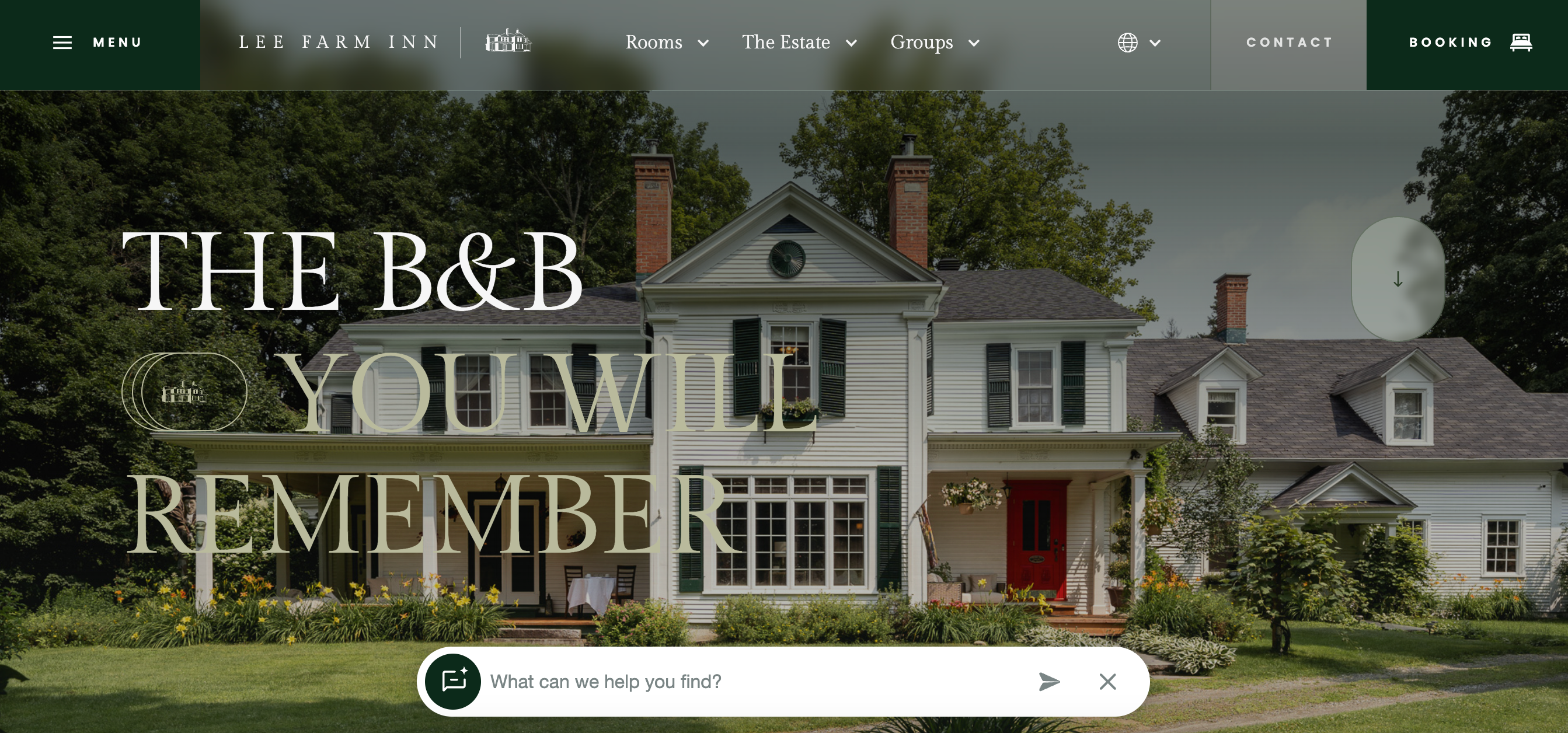
Now, let’s ask a few complex questions to see if it can give human-level assistance to this site’s visitors.
The responses are excellent. It even adds buttons for people to click on and follow-up questions that one could ask ⤵️
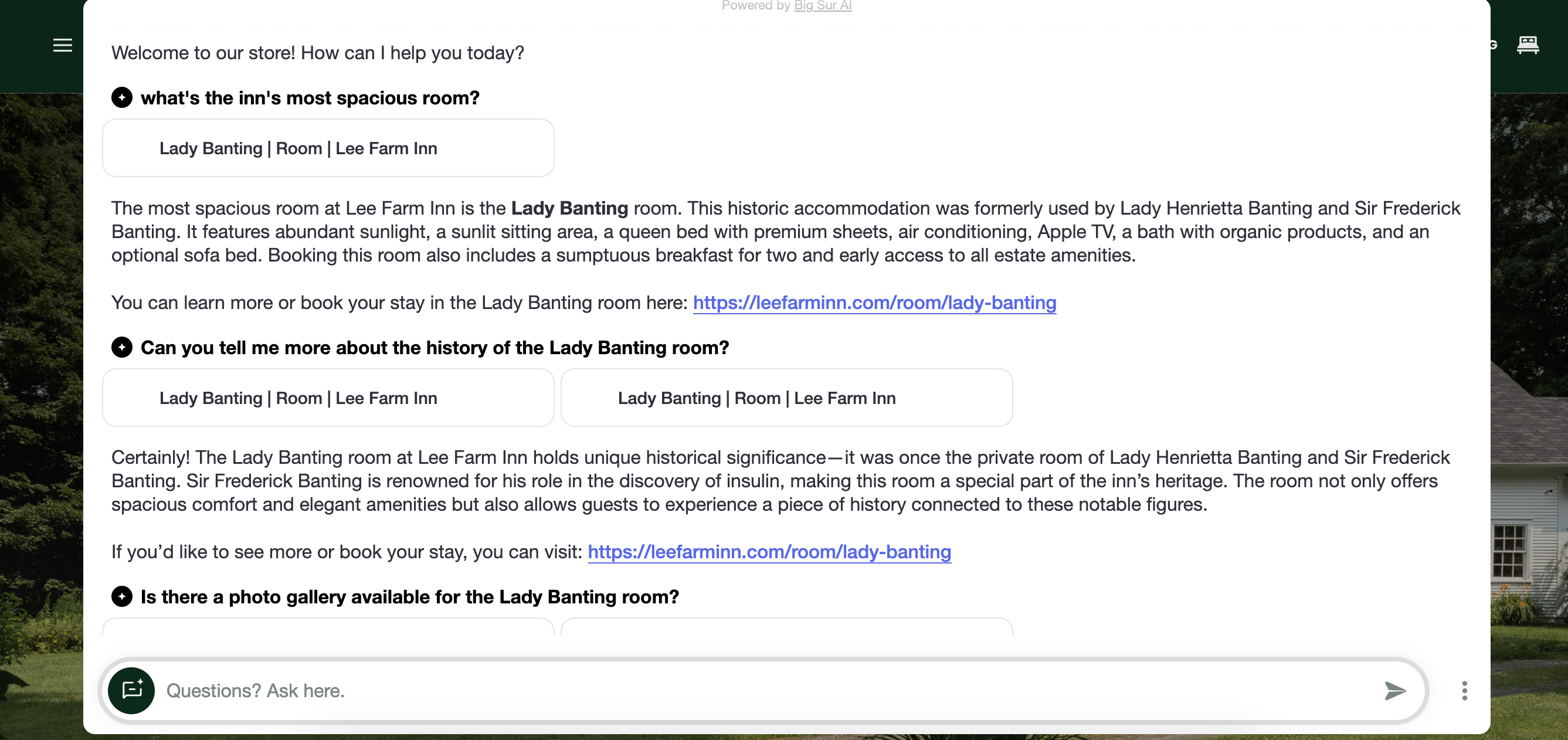
💰 How much can you get on the free plan?
Big Sur AI allows up to 1,000 visitors a month and unlimited customer conversations on its free plan so that this AI chatbot can be completely free and for a long time!
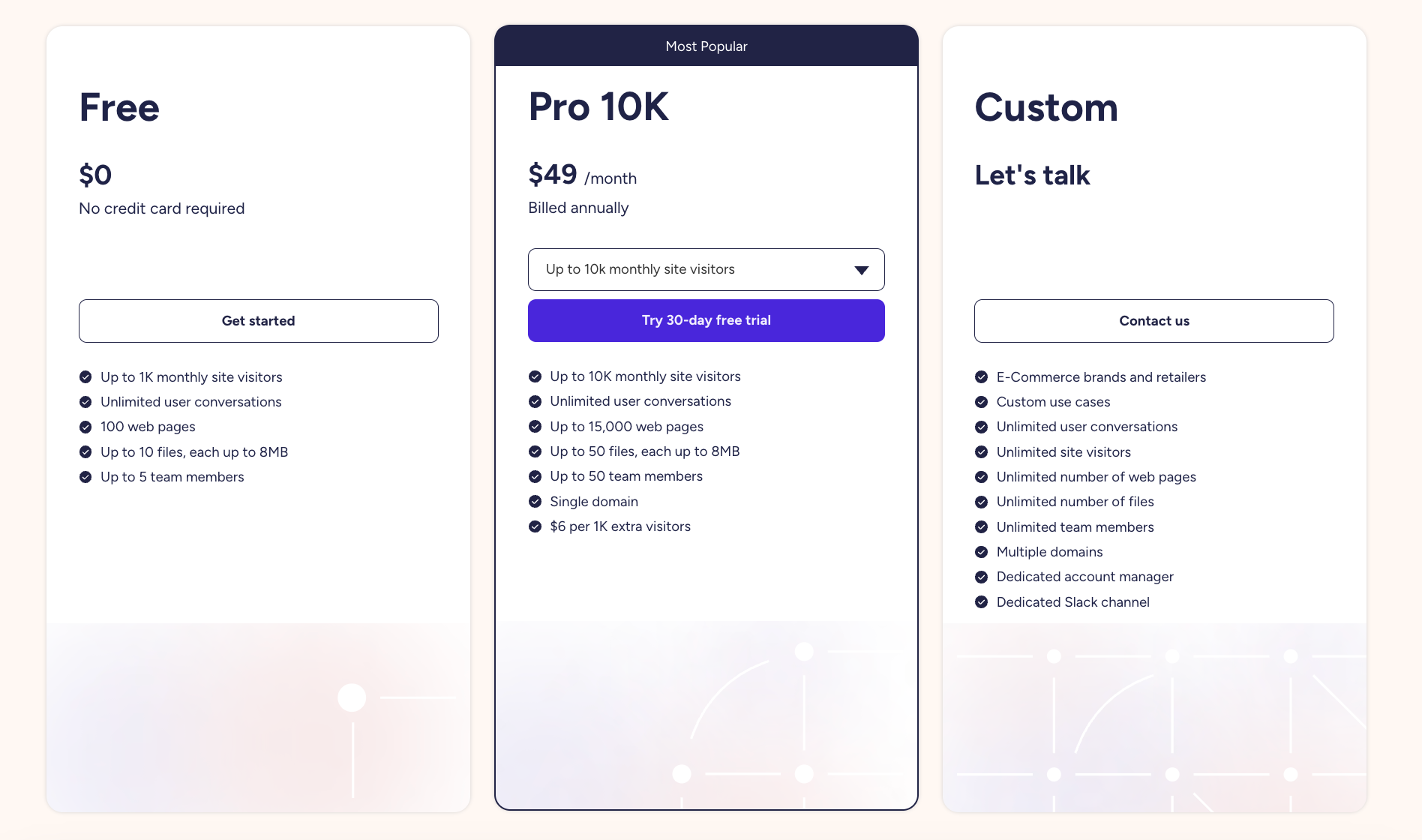
Method #2: Pick templates from general AI agent platforms
Tools you can use: Relay.app, Make, n8n, Zapier, Jotform, Botpress.
Platforms that allow you to custom-build an AI chatbot vary. Some are traditional workflow builders with recently added AI capabilities (Zapier, Make, n8n).
Others have been built to power AI workflows and agents (Relay.app).
Some, like Botpress, let you custom-build AI agents from scratch. The issue, however, is that it takes more than 10 minutes and will often cost you.
For the sake of this guide, we’ll use Jotform as an example, as we were able to deploy an agent from their template library for free in under 10 minutes ⤵️
Step 1: Head to Jotform’s AI Agents library
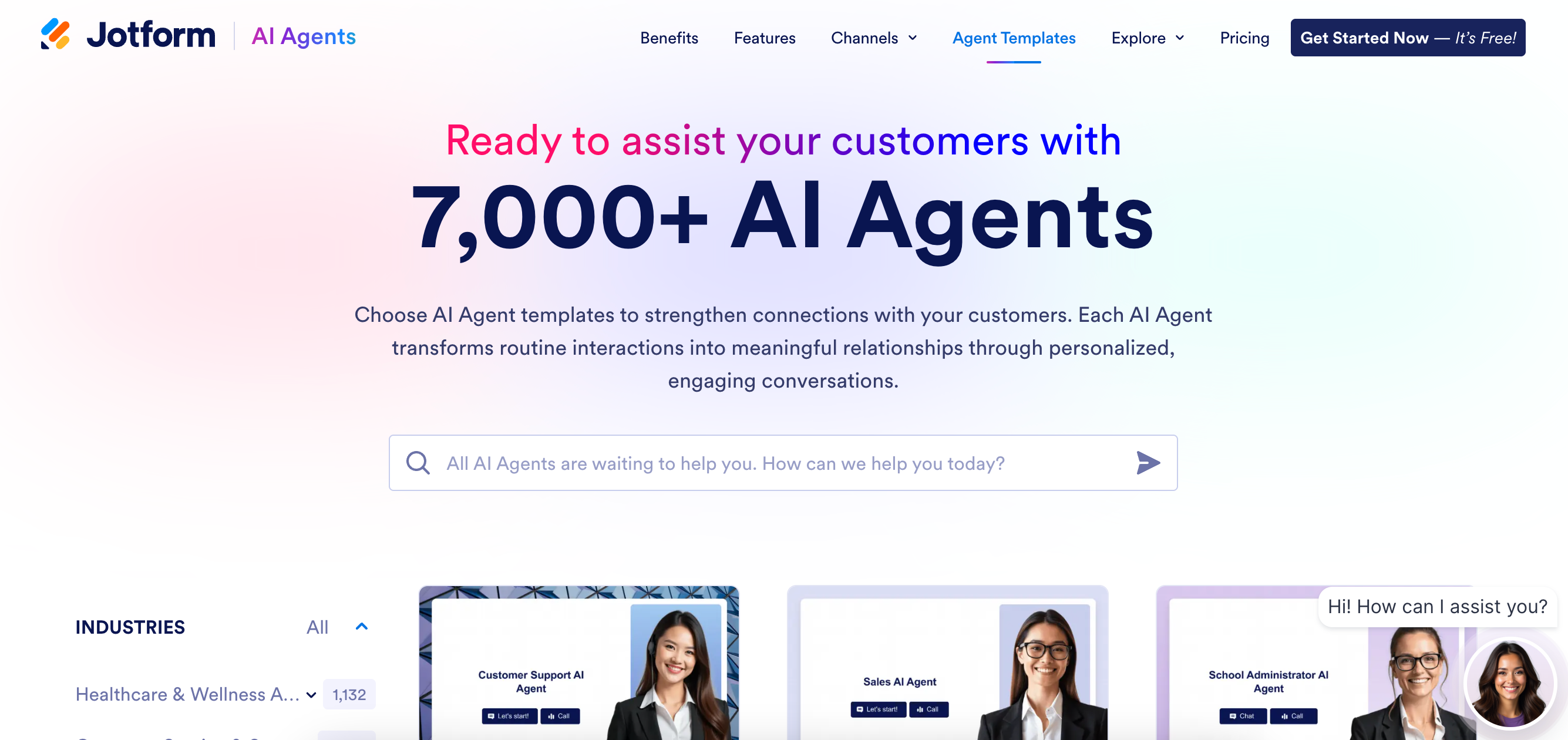
Step 2: Head to AI Chatbot Templates
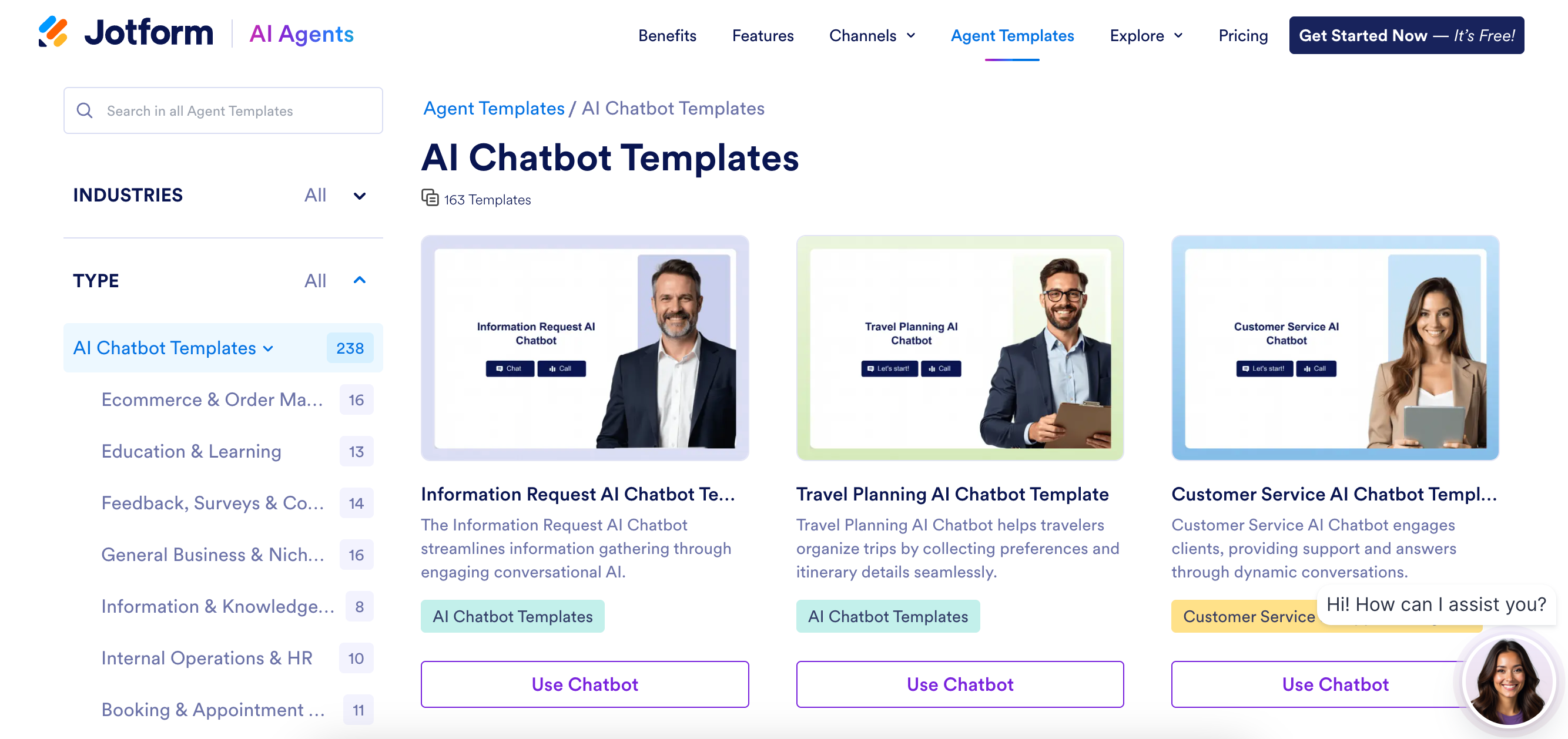
Step 3: Pick the template that best suits your site and click “Use chatbot”

Step 4: Customize your AI chatbot
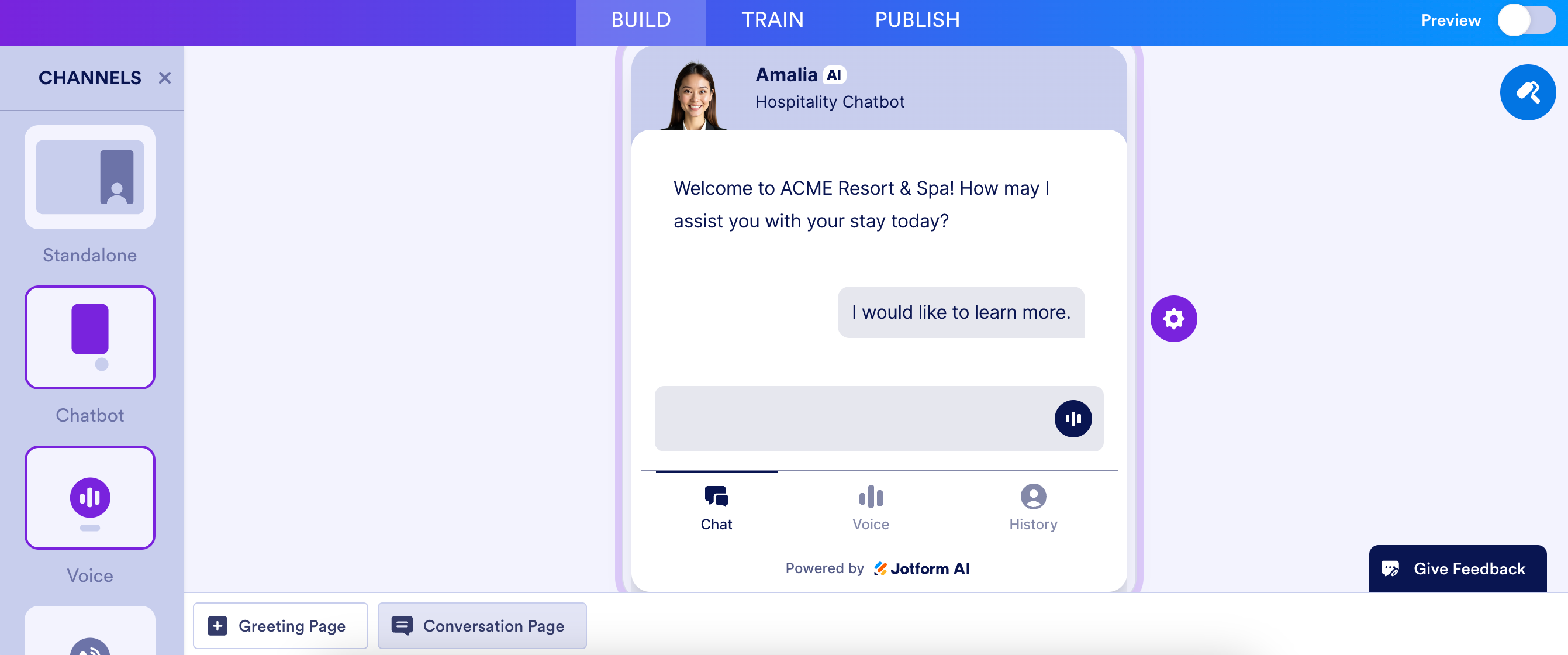
Step 5: Add training material
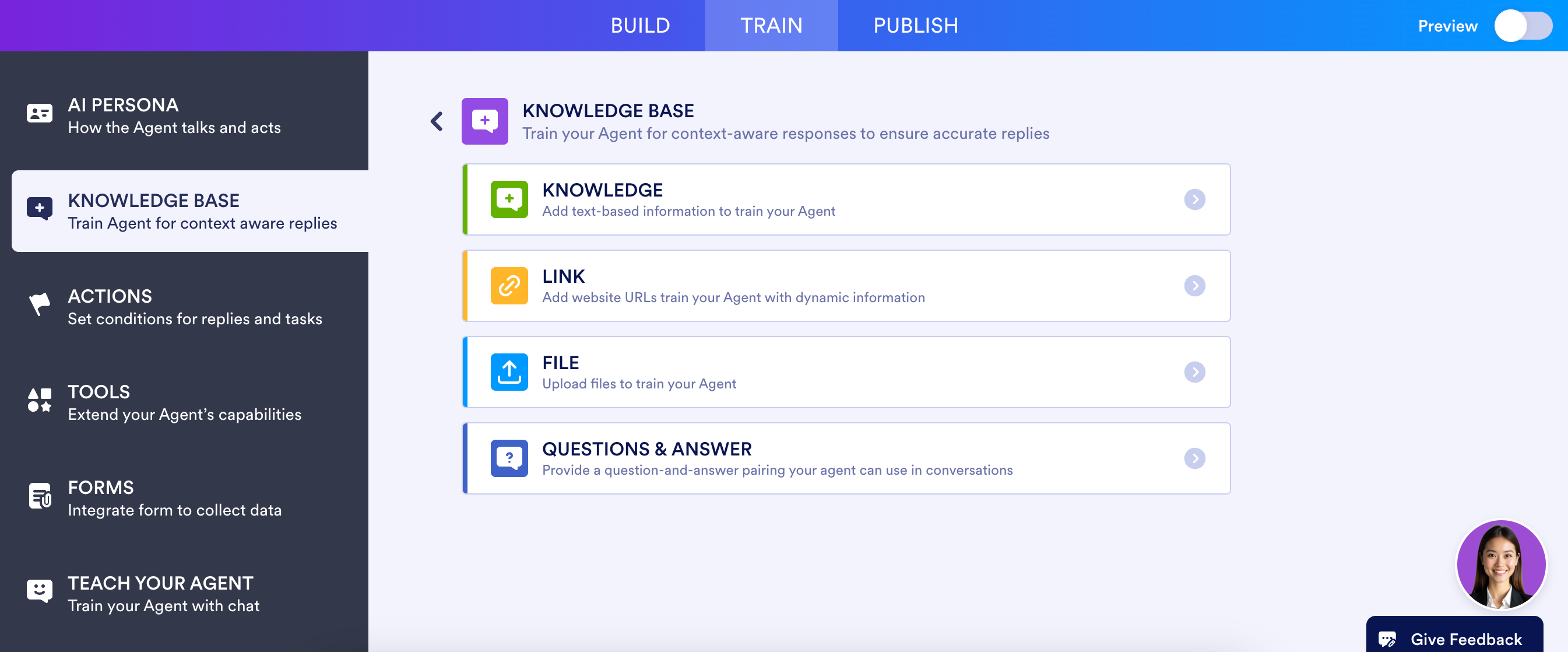
Step 6: (Optional) Set actions and connect your agent to other tools to expand its capabilities
For example, you could connect your Shopify account to let the AI learn about your store’s products.
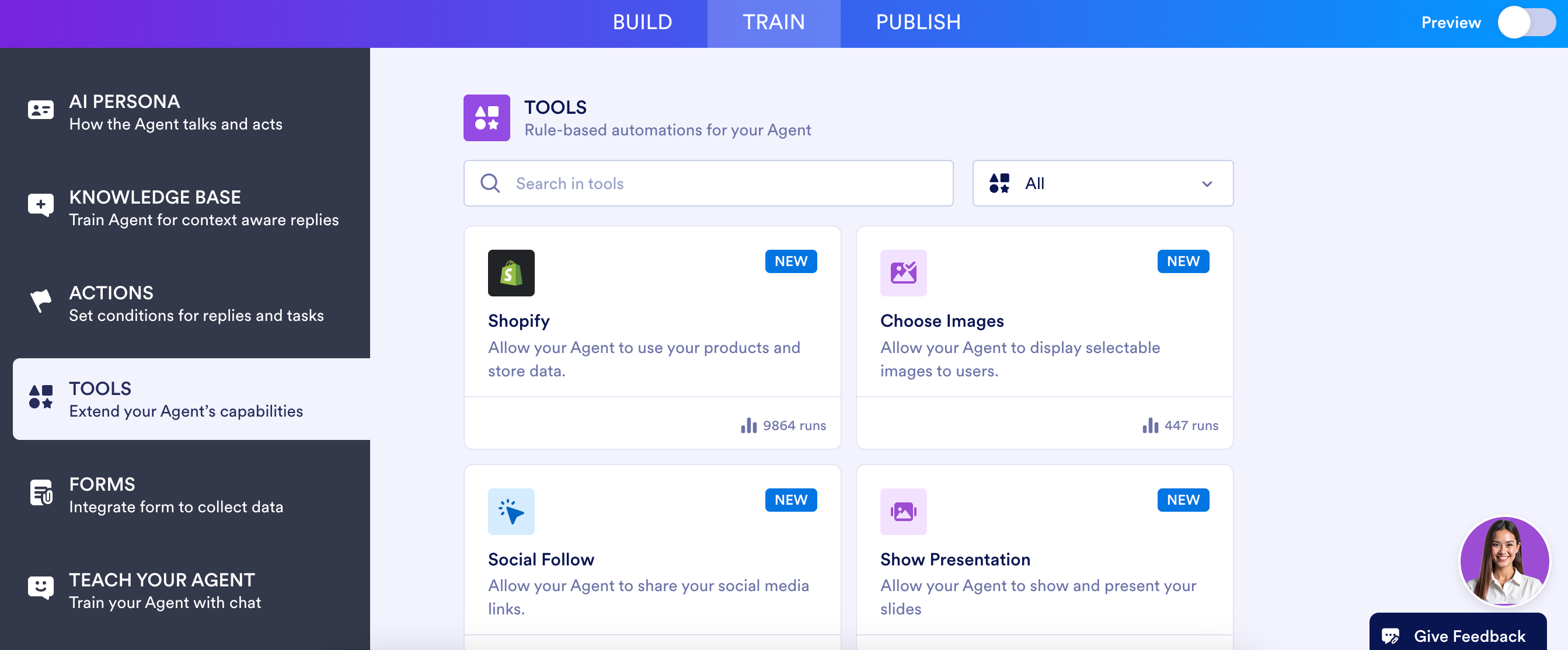
Step 7: Create your Jotform account and publish your AI chatbot
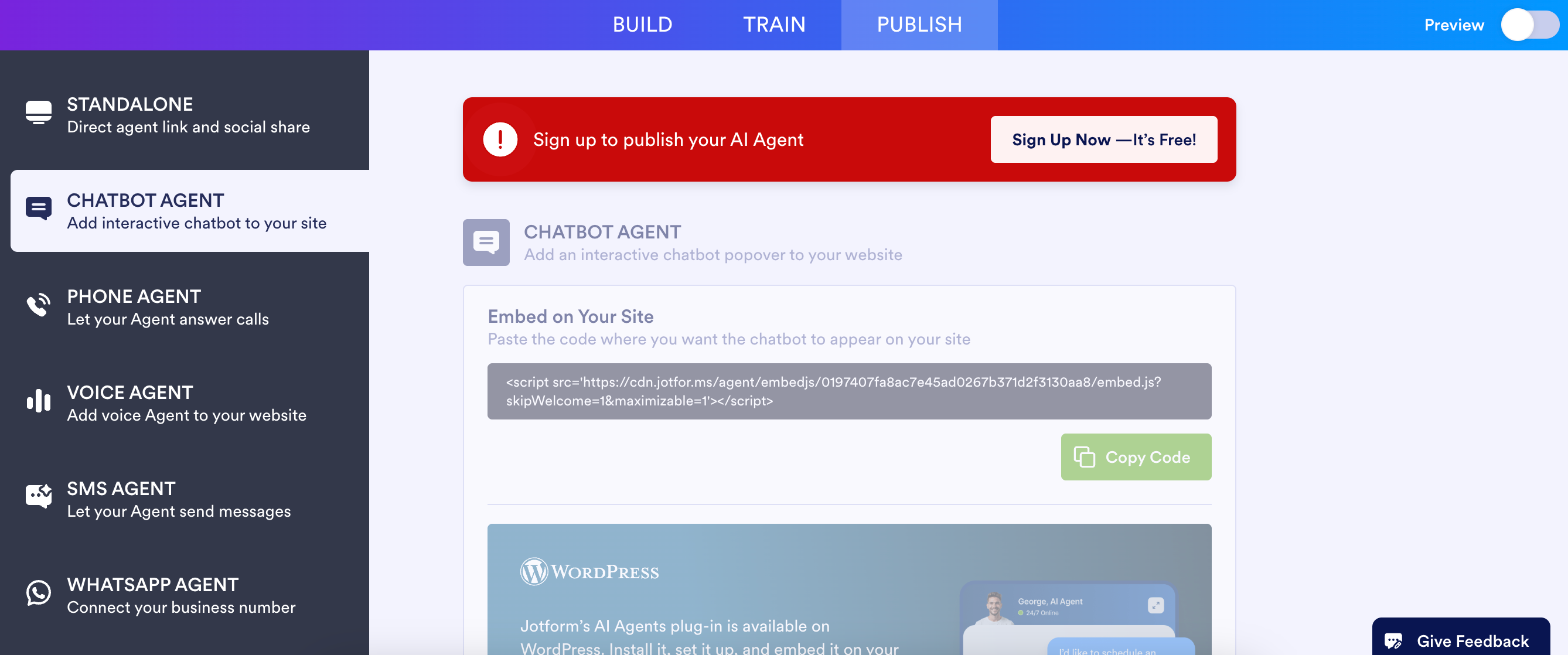
💰 How much can you get on the free plan?
With Jotform, you can build and launch 5 AI agents for free. The limitation comes with conversations. The free plan only allows for 100 monthly discussions.

Why AI chatbots are superior to regular support bots
Bottom line: An AI chatbot isn’t just a fancier FAQ — it’s a 24/7 assistant that understands, learns, and takes action. It can engage visitors like humans without cost or complexity.
Traditional support bots have pre-defined answers and often refer visitors to support documentation. They annoy most visitors by popping up in their faces on web pages and often result in waiting for a human support agent to intervene…
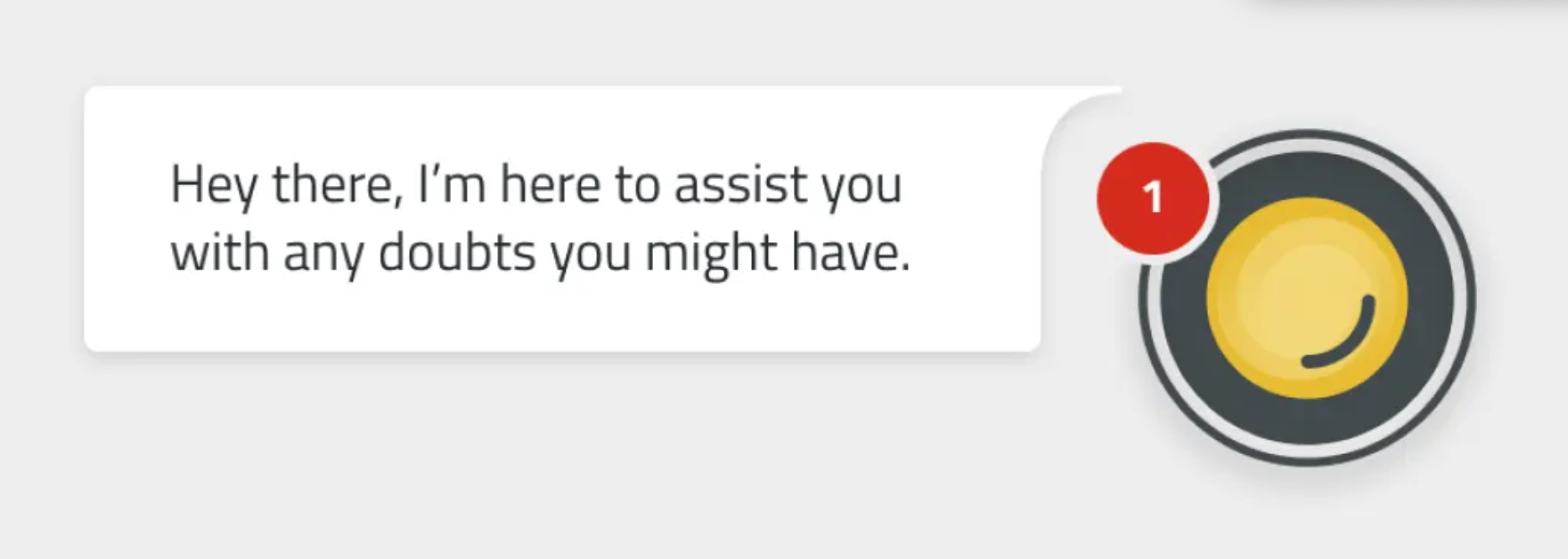
🔍 Key differences between regular chatbots and AI-native chatbots
| Feature | Traditional Chatbot | AI Chatbot (2025) |
|---|---|---|
| Response Style | Scripted Q&A (fixed paths) | Natural, conversational, personalized |
| Learning Ability | Static — doesn’t improve over time | Learns and improves from interactions |
| Understanding Context | Low — only works on keywords | High — understands intent and context |
| Handling Complex Queries | Often gets stuck or redirects to humans | Answers multi-step, nuanced queries |
| Setup Requirements | Time-consuming scripting | Quick setup — learns from content |
| Scalability | Limited to FAQ-style flows | Scales across support, sales, and more |
| Tool Integration | Usually none or manual | Integrates with CRMs, calendars, etc. |
Benefits of switching to an AI chatbot in 2025
- It reduces support load → AI chatbots can answer even complex queries without escalation.
- It increases conversions → They proactively assist visitors, guiding them to take action (book, buy, register).
- It’s faster to deploy → Many modern AI bots just need your website URL to start.
- It improves customer experience → Feels more like chatting with a helpful human than a robotic flow.
- It’s multipurpose → Use one AI bot for support, sales, content, and onboarding, all from one interface.
How to choose the right chatbot for your website
1. Define your business goals & use cases
Before evaluating tools, clarify why you want a chatbot.
Common Goals:
- Reduce support costs
- Convert more leads on your website
- Provide 24/7 assistance
- Automate repetitive internal tasks
- Personalize user experiences
Use case examples:
| Goal | Use Case |
|---|---|
| Support | Automate FAQs, triage tickets, handle returns |
| Sales | Qualify leads, offer product recommendations |
| Marketing | Capture emails, deliver content, run promotions |
| Internal Ops | Answer HR/IT questions, automate tasks |
💡 Key tip: Be specific. “Answer customer questions” is vague. “Guide users through a 3-step booking flow and hand off complex queries to a rep” is better.
2. Decide on the chatbot type you need
As we mentioned above in this guide, you could pick from the following solutions for your website’s AI chatbot:
- Traditional support chatbot
- AI-powered chatbot (with a tool like Big Sur AI)
- Custom-made AI agent (with a tool like Botpress)
💡Pro Tip: If you just want to answer FAQs → traditional rule-based or hybrid chatbots are fine.If you want actions (e.g., booking, upselling, CRM updates) → An AI-powered agent or chatbot is better.
3. List must-have features
Prioritize features that matter based on your use case:
| Feature | Description |
|---|---|
| Website Embed | Appears as popup, widget, or inline chat |
| Knowledge Base Ingestion | Reads & understands help docs automatically |
| Tool Integration | Connects with CRM, calendar, Stripe, Slack |
| Context + Memory | Remembers past interactions & data |
| Analytics | Reports on drop-off, CSAT, conversion, usage |
| Lead Routing | Qualifies and passes leads to sales team |
| Security | SOC 2, GDPR, HIPAA compliance options |
| Human Fallback | Hands off to a live agent if needed |
4. Evaluate the best chatbot platforms
| Factor | What to Check |
|---|---|
| Ease of Setup | No-code setup? Auto-ingestion of site content? |
| Pricing | Free tier? Usage-based? Scalable? |
| Integrations | Native support for your tech stack |
| Intelligence | Can it reason, act, or just chat? |
| Customization | Branding, tone, behavior flexibility |
| Languages | Support for international or multilingual sites |
| Support | Onboarding, documentation, live help |
5. Run tests to make sure answers satisfy your standards
Before rolling out across your whole business:
- Start with a limited use case (e.g., only homepage chat or order FAQs)
The base thing you want to test is whether or not the AI’s answers make sense and respect your standards of quality, precision, and actionability. You can simply verify this by testing the bot yourself and asking questions about your business or your product.
For larger rollouts, or for more thorough pre-publishing testing, you can track these metrics:
- Deflection rate (how many issues are resolved without humans)
- Engagement rate (how many users interact with it)
- Conversion lift (how many more leads or sales happen)
- Satisfaction (via CSAT or NPS)
🎯 Analyze if it’s doing what you intended, and scale gradually.
Bonus: Top 6 AI chatbot tools to consider (2025)
📖 Read more: Best AI Chatbots for Websites in 2025 (Top 6 Compared)
| Best For | Starting Price | Key Features | Free Plan? |
|---|---|---|---|
| Big Sur AI | $0/month | AI-powered website assistant, e-commerce optimization, AI Content Marketer | ✅ Yes |
| Chatbase | $0/month | Custom AI training, multi-channel deployment, advanced analytics | ✅ Yes |
| ChatBot.com | $52/month | No-code chatbot builder, multi-platform support, customizable UI | ❌ No |
| Tidio | $24.17/month | Live chat with AI, automation flows, multi-channel inbox | ✅ Yes |
| Intercom | $39/seat/month | AI-powered support, omnichannel messaging, Fin AI agent | ❌ No |
| Botpress | $0/month | Visual flow builder, open-source flexibility, multi-channel deployment | ✅ Yes |
Ready to get started?


